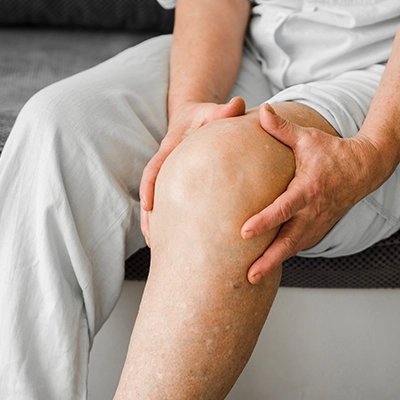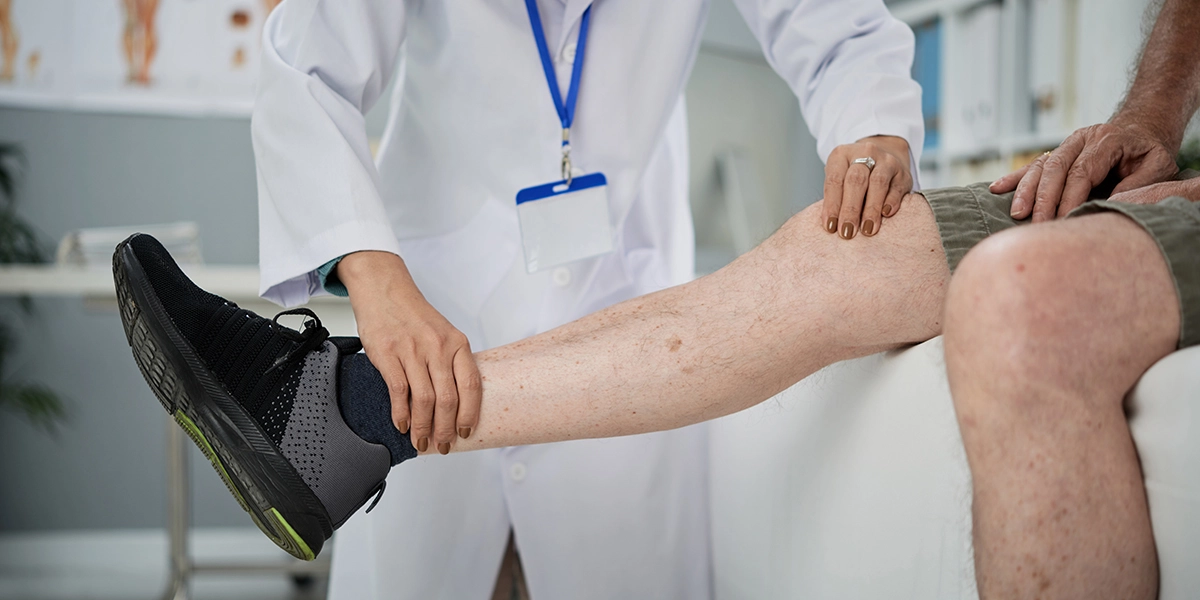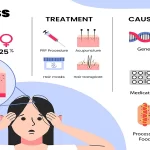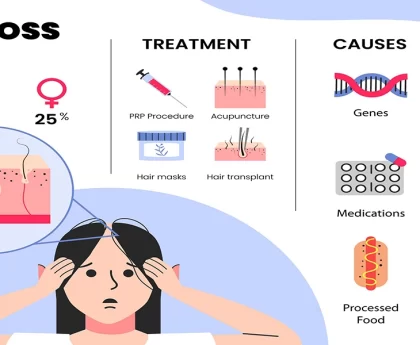Knee Pain, is a common issue that can affect people of all ages. It can range from mild discomfort to severe pain, and it may be caused by various factors.
Here are some common causes of knee pain:
- Osteoarthritis: Osteoarthritis is a degenerative joint disease that can affect the knee joint, leading to pain, stiffness, and reduced mobility.
- Knee Injuries: Injuries to the knee, such as ligament tears (e.g., anterior cruciate ligament – ACL, medial collateral ligament – MCL), meniscus tears, or fractures, can cause acute pain and inflammation.
- Tendinitis: Tendinitis is inflammation of the tendons around the knee joint, often due to overuse or repetitive stress.
- Bursitis: Bursitis is inflammation of the bursae (small fluid-filled sacs) that cushion the knee joint.
- Patellofemoral Pain Syndrome (Runner’s Knee): This condition involves pain around or under the kneecap and is often associated with overuse or improper tracking of the kneecap.
- Iliotibial (IT) Band Syndrome: IT band syndrome is a common cause of lateral knee pain, often affecting runners and cyclists.
- Rheumatoid Arthritis: Rheumatoid arthritis is an autoimmune disease that can cause inflammation and pain in multiple joints, including the knees.
- Gout: Gout is a type of inflammatory arthritis caused by the buildup of uric acid crystals in the joints, including the knee.
- Osgood-Schlatter Disease: This condition primarily affects adolescents and causes pain and swelling just below the kneecap, where the patellar tendon attaches to the shinbone.
- Obesity: Excess weight can put additional stress on the knee joints, leading to pain and increased risk of osteoarthritis.
Treatment for knee pain depends on the underlying cause and severity of the condition.
Some common treatments include:
– Rest and avoiding activities that exacerbate the pain.
– Ice and elevation to reduce swelling.
– Pain medications and anti-inflammatory drugs.
– Physical therapy to strengthen the knee muscles and improve flexibility.
– Knee braces or supports for stability and to relieve pressure.
– Injections of corticosteroids or hyaluronic acid for joint inflammation or osteoarthritis.
– Surgery in severe cases, such as knee arthroscopy or knee replacement.
If you are experiencing knee pain that is persistent or interfering with your daily activities, it’s important to seek medical advice from a healthcare professional. They can properly diagnose the cause of the knee pain and recommend appropriate treatments to relieve pain and improve knee function.
Symptoms, Of Knee Pain:
The symptoms of knee pain can vary depending on the underlying cause and the specific structures involved.
Here are some common symptoms associated with knee pain:
- Pain: Pain is the primary symptom of knee pain. The intensity, location, and nature of the pain can provide clues about the underlying condition.
- Swelling: The knee may become swollen due to inflammation in the joint or surrounding tissues.
- Stiffness: Stiffness in the knee joint can make it challenging to move the knee freely.
- Limited Range of Motion: Knee pain can lead to a reduced range of motion, making it difficult to fully bend or straighten the knee.
- Clicking or Popping Sensation: Some people may experience clicking, popping, or grinding sensations in the knee joint during movement.
- Weakness: Knee pain may cause weakness in the knee, making it difficult to bear weight or engage in physical activities.
- Instability: Some individuals may feel a sense of instability or “giving way” of the knee, especially during weight-bearing activities.
- Redness or Warmth: Inflammatory conditions may cause redness and warmth around the knee joint.
- Difficulty Walking: Severe knee pain can lead to difficulty walking or putting weight on the affected leg.
- Locking: The knee may feel “locked” in a particular position, preventing normal movement.
- Night Pain: Knee pain that worsens at night, particularly when lying down, can be a symptom of certain conditions.
- Tenderness: The knee may be tender to touch, especially over areas of inflammation or injury.
The specific combination of symptoms and their severity can help healthcare professionals in diagnosing the cause of knee pain. Common causes of knee pain include osteoarthritis, ligament injuries, meniscus tears, tendinitis, bursitis, and overuse injuries. If you experience persistent or severe knee pain or have difficulty with knee function, it is essential to seek medical advice from a healthcare professional for proper evaluation and appropriate treatment.

Types of Knee Pain:
Knee pain can manifest in various ways, and the location and nature of the pain can provide clues about the underlying cause.
Here are some common types of knee pain:
- 1. Anterior Knee Pain: Anterior knee pain is felt at the front of the knee, around or behind the kneecap (patella).
– It is commonly associated with patellofemoral pain syndrome or runner’s knee, where the patella does not track properly in the femoral groove, causing irritation and pain. - Medial Knee Pain: Medial knee pain occurs on the inside of the knee joint.
– It can be caused by conditions such as medial meniscus tears, medial collateral ligament (MCL) injuries, or arthritis affecting the medial compartment of the knee. - Lateral Knee Pain: Lateral knee pain is felt on the outer side of the knee joint.
– It may be due to conditions like iliotibial (IT) band syndrome, lateral meniscus tears, or lateral collateral ligament (LCL) injuries. - Posterior Knee Pain: Posterior knee pain is located at the back of the knee.
– Causes may include bursitis, Baker’s cyst (a fluid-filled cyst behind the knee), or hamstring muscle injuries. - Patellar Tendon Pain (Jumper’s Knee): Patellar tendon pain is experienced just below the kneecap and is often associated with overuse, especially in athletes involved in jumping activities.
- Bursitis Pain: Bursitis is inflammation of the bursae, small fluid-filled sacs that cushion the knee joint.
– Pain may occur on the inner or outer side of the knee, depending on the affected bursa. - Meniscal Pain: Meniscal pain is typically felt inside the knee joint, and it may be sharp or aching, depending on the extent of the meniscal tear.
- Arthritic Pain: Arthritis in the knee joint can cause generalized pain, stiffness, and swelling in the knee, which may worsen with activity.
- Referred Pain: Sometimes, pain from other areas of the body, such as the hip or lower back, can be perceived as knee pain. This is known as referred pain.
It’s important to note that the specific location and type of knee pain can vary depending on the underlying cause. Proper diagnosis by a healthcare professional, such as an orthopedic specialist or a sports medicine doctor, is essential to determine the exact cause of knee pain and to develop an appropriate treatment plan.
Causes of Knee Pain:
Knee pain can have various causes, and it is essential to identify the underlying factor to determine the most appropriate treatment.
Some common causes of knee pain include:
- Osteoarthritis: Osteoarthritis is a degenerative joint disease and a common cause of knee pain, especially in older adults. It occurs when the protective cartilage that cushions the ends of bones wears down over time, leading to pain, stiffness, and reduced joint mobility.
- Ligament Injuries: Injuries to the knee ligaments are frequent causes of knee pain. Common ligament injuries include:
– Anterior Cruciate Ligament (ACL) Tear: Often occurs during sports or activities involving sudden stops and changes in direction.
– Medial Collateral Ligament (MCL) Tear: Commonly caused by a blow to the outer knee, such as during sports.
– Posterior Cruciate Ligament (PCL) Tear: Usually caused by a force directed to the front of the knee, like during a car accident. - Meniscus Tears: The menisci are C-shaped cartilage pads in the knee that act as shock absorbers. Tears in the menisci can cause knee pain, swelling, and a feeling of the knee “catching” or “locking.”
- Tendinitis: Tendinitis is inflammation of the tendons around the knee joint, often caused by overuse or repetitive movements.
- Bursitis: Bursitis is inflammation of the bursae, small fluid-filled sacs that cushion the knee joint. Excessive kneeling or repetitive stress can lead to bursitis and knee pain.
- Patellofemoral Pain Syndrome (Runner’s Knee): This condition involves pain around or behind the kneecap (patella) and is commonly associated with overuse or improper tracking of the patella.
- Iliotibial (IT) Band Syndrome: IT band syndrome is a common cause of lateral knee pain, often affecting runners and cyclists. It occurs due to friction between the IT band and the outside of the knee joint.
- Rheumatoid Arthritis: Rheumatoid arthritis is an autoimmune disease that can cause inflammation and pain in multiple joints, including the knees.
- Gout: Gout is a type of inflammatory arthritis caused by the buildup of uric acid crystals in the joints, including the knee.
- Osgood-Schlatter Disease: This condition primarily affects adolescents and causes pain and swelling just below the kneecap, where the patellar tendon attaches to the shinbone.
- Overuse or Repetitive Strain: Activities that involve repeated stress on the knee joint, such as running or jumping, can lead to overuse injuries and knee pain.
- Obesity: Excess body weight can put additional stress on the knee joints, leading to pain and an increased risk of knee conditions like osteoarthritis.
These are just some of the common causes of knee pain, and there may be other factors contributing to knee pain in specific individuals. Proper diagnosis by a healthcare professional is crucial to determine the underlying cause and to develop an appropriate treatment plan.
Treatments of Knee Pain:
The treatment for knee pain depends on the underlying cause and the severity of the condition.
Here are some common treatments for knee pain:
- Rest and Activity Modification: Resting the knee and avoiding activities that exacerbate the pain can help reduce inflammation and promote healing.
- Ice and Heat Therapy: Applying ice packs to the affected knee can help reduce swelling and inflammation.
– Heat therapy, such as warm compresses or warm baths, can help relax the muscles and ease stiffness. - Pain Medications: Over-the-counter pain relievers, such as acetaminophen or nonsteroidal anti-inflammatory drugs (NSAIDs) like ibuprofen, can help alleviate pain and reduce inflammation.
- Physical Therapy: A physical therapist can design a customized exercise program to strengthen the knee muscles, improve flexibility, and promote better knee stability.
- Knee Braces or Supports: Using knee braces or supports can provide additional stability and help reduce pain, particularly for certain conditions like ligament injuries or osteoarthritis.
- Corticosteroid Injections: In some cases, corticosteroid injections can be administered directly into the knee joint to reduce inflammation and provide temporary relief from pain.
- Hyaluronic Acid Injections: For knee osteoarthritis, hyaluronic acid injections may be used to lubricate the joint and improve mobility.
- Platelet-Rich Plasma (PRP) Therapy: PRP therapy involves injecting a concentrated solution of the patient’s platelets into the knee to promote tissue repair and reduce inflammation.
- Arthrocentesis: Arthrocentesis is a procedure in which excess fluid is removed from the knee joint using a needle, providing relief from pain and swelling.
- Surgical Interventions: In cases of severe knee injuries or degenerative conditions, surgery may be recommended. Surgical options include arthroscopic procedures, ligament repair, meniscus repair, and knee replacement surgery.
- Weight Management: Maintaining a healthy weight can help reduce stress on the knee joints and alleviate knee pain, especially in cases of osteoarthritis.
- Assistive Devices: Using assistive devices like canes or walkers can help take some weight off the affected knee and improve mobility.
The specific treatment plan will vary based on the individual’s condition and medical history. It’s essential to consult a healthcare professional, such as an orthopedic specialist or a sports medicine doctor, for proper evaluation and personalized treatment recommendations for knee pain. Early intervention and appropriate management can help alleviate symptoms and improve knee function.
Knee Pain Self Management:
Self-management of knee pain can be effective in reducing pain and improving the overall function of the knee.
Here are some self-management strategies for knee pain:
- Rest and Avoid Overuse: Give your knee time to rest and avoid activities that exacerbate the pain. Avoid high-impact activities and consider low-impact exercises that are gentler on the knee, such as swimming or cycling.
- Ice and Heat Therapy: Apply ice packs to the affected knee for about 15-20 minutes every few hours during the initial 48 hours to reduce inflammation. After the initial phase, consider using heat therapy to relax the muscles and improve blood flow to the area.
- Pain Relievers: Over-the-counter pain relievers, such as acetaminophen or nonsteroidal anti-inflammatory drugs (NSAIDs) like ibuprofen, can help alleviate pain and reduce inflammation. However, consult with a healthcare professional before using these medications, especially if you have any medical conditions or take other medications.
- Weight Management: If you are overweight, losing weight can help reduce the pressure on the knee joint, which may alleviate knee pain, particularly in cases of osteoarthritis.
- Exercise and Stretching: Gentle exercises and stretching can help improve the strength and flexibility of the knee joint and surrounding muscles. Consult with a physical therapist for an appropriate exercise program tailored to your specific condition.
- Knee Braces or Supports: Depending on the cause of your knee pain, using knee braces or supports may provide additional stability and help reduce pain.
- Proper Footwear: Wearing proper footwear that provides adequate support and cushioning can help reduce the impact on the knee joint during walking and other activities.
- Avoid Prolonged Kneeling: Avoid prolonged kneeling or squatting, as it can put additional stress on the knee joint.
- RICE Protocol: Following the RICE protocol (Rest, Ice, Compression, Elevation) can be beneficial in managing acute knee pain and swelling.
- Assistive Devices: If necessary, consider using assistive devices like canes or walkers to reduce pressure on the knee while walking.
- Keep the Knee Elevated: Elevating the knee while resting can help reduce swelling and improve circulation.
- Avoid High Heels: Limit the use of high-heeled shoes, as they can put excessive strain on the knee joint.
It’s essential to listen to your body and avoid activities that worsen the pain. If the knee pain persists or becomes severe, it is advisable to seek medical advice from a healthcare professional or a specialist in orthopedics or sports medicine. They can provide a proper diagnosis and create a personalized treatment plan to address your specific knee pain.
Read this Article Also:- 7 Main Poses in Yoga for Chest Pain: Get Instant Relief
If you don’t like this article/post please share your feedback.





